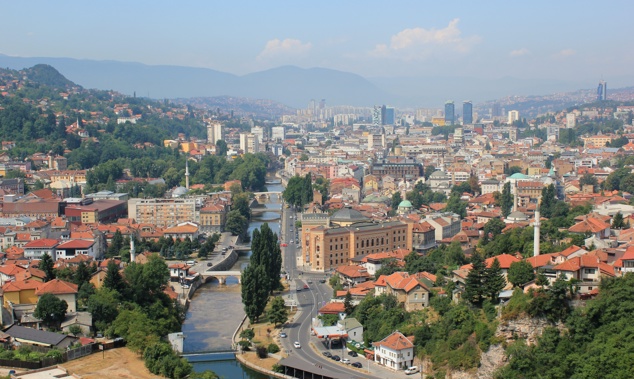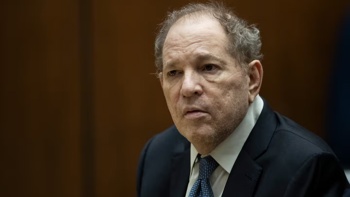
The Balkans is a compelling, battle-hardened pocket of Southeastern Europe, fractured by epic conflicts over the ages. Long resembling a geo-political fault line, the Balkans has ricocheted from Romans and Goths to Byzantines and Slavs before being conquered by the Turks in the 15th century. After becoming the Ottomans’ westernmost outpost, the mighty Hapsburgs ruled the roost, swallowing the Balkans into the Austro-Hungarian Empire. World War I broke out after the assassination of Archduke Franz Ferdinand in Sarajevo. Following World War II, Bosnia & Herzegovina was welded with Croatia, Serbia, Macedonia, Montenegro, and Slovenia into Communist Yugoslavia.
And then, just 30 years ago, as Tito’s Yugoslavia fell part, so did basic humanity. Orthodox Christian Serbs, Catholic Croats and Muslim Bosniaks, who had co-existed for generations in a multi-ethnic society, suddenly weaponised their differences. Sarajevo found itself trapped in the longest siege of any city in modern history, during which Serb forces, underpinned by the brute strength of the former Yugoslav army, rained fury down on a defenceless city from the wrap-around mountains. All of these historic strands were vividly brought to life, with raw and authentic local context, on my riveting two week-long Balkan Adventures Trafalgar Tour. It’s the bullet holes you first notice, when arriving in Sarajevo. Buildings hit by mortar shells still bear those scars, like the weeping wounds of war. Unremarkable apartment block facades are speckled with unseemly blisters or large chunks of plaster gouged out like missing teeth. Another constant is the Sarajevo Roses, 200 petal-shaped craters in the pavement caused by shelling, which were embalmed in red resin as urban memorials, where at least three people were killed.
 Photo / Mike Yardley
Photo / Mike Yardley
For nearly four years, from 1992 to 1996, the city smouldered under a blitz that killed 11,000 residents. My grippingly compelling Trafalgar local specialist, Samra, remarked that dealing to the building scars is still a low priority for the city. 60% of Sarajevo’s buildings were destroyed in the siege. Our Trafalgar hotel was located in the heart of “snipers alley”, where building after building still sports battle wounds. The Holiday Inn Hotel, where war correspondents were routinely based, has just been rebuilt. It was on our way to the Tunnel of Hope, snaking underneath Sarajevo Airport, that Samra soberly remarked how her father is still “missing.” Like many other Bosniaks, he was most likely a victim of ethnic-cleansing and consigned to a mass-grave.
A friend of Samra’s was notified last month that two of her missing uncle’s bones had just been positively DNA-identified from a mass-grave. Samra boiled with anger about the United Nations, the “United Nothing” as she called it, particularly for failing to prevent the Srebrenica massacre in a UN “safe zone”, which saw the genocidal killing of 8000 Muslim men and boys. Today, the nation is governed by a three-way presidency made up of a Bosniak, a Serb and a Croat. Samra noted they don’t like each other and don’t agree on anything. She claimed that many locals still yearn for the Tito era, when the country was at least productive and cohesive. How does she feel about her Serbian neighbours? “The relationship is fraught. It will take many generations for trust to be rebuilt with Serbia.”
 Local guide Samra at the Tunnel of Hope. Photo / Mike Yardley
Local guide Samra at the Tunnel of Hope. Photo / Mike Yardley
A stand-out Sarajevo experience is to encounter the Tunnel of Hope. Furtively built under the airport runway during the city’s siege, it took more than six months to dig this 900 metre long tunnel, providing the only connection with the outside world – and a vital supply line. Just over a metre wide and 1.5 metres in height, this secret corridor enabled the beleaguered city to secretly regain access to telephone lines, food, weaponry and oil supplies. Eventually, a railway track was installed to haul wagons through it. It was never discovered by Serb forces. We visited the Kolar family home where the cellar was used as its entry point and walked through a small section of the tunnel, which has been preserved as a museum. Outside the tunnel, a gallery of grim black and white photos starkly portray Sarajevo’s bleakest days.
 Photo / Mike Yardley
Photo / Mike Yardley
It seems so perverse that so much brutality ran riot amid such spectacular natural beauty. Sarajevo’s geography is dramatic, wedged inside a long, thin valley, flanked by forested mountains, on all sides. Soaring minarets serrate the skyline along with the Romanesque towers of Catholic churches and the gleaming onion-shaped domes of the Eastern Orthodox. Dubbed the Jerusalem of Europe, it’s an enthralling melting-pot of faith, where the call to prayer serenades the old town, while church bells ring out from Sacred Heart Cathedral.
The labyrinthine old quarter at the heart of Sarajevo, Bascarsija, is a delight to stroll through. On the main pedestrian thoroughfare, Ferhadija, a pavement marking denotes the “cultural equator,” encouraging visitors to take a photo looking first one way up the street and then the other. Austro-Hungarian architecture and a mash-up of western shop signs dominates one direction, while the other direction transforms the streetscape into a Turkish bazaar. Gazi Husrev-Bey’s awe-inspiring mosque is a city emblem. Built in the 16th century, it’s the largest Ottoman mosque in Bosnia and Herzegovina. Significantly damaged in the war, it’s triumphant restoration is a major badge of honour.
 Photo / Supplied
Photo / Supplied
When the Austro-Hungarians took over in the late 19th century, they used Sarajevo as a testing place for modern innovations they hoped to use in their larger cities. Sarajevo’s main mosque became the first in the world to be electrified. The Hapsburgs installed Sarajevo’s tram system to make sure it worked properly before building a larger-scale version in Vienna.
We passed by the Latin Bridge, which crosses the Miljacka River, close to the old town. You can stand on the spot where the heir to Hapsburg throne, Archduke Franz Ferdinand, was assassinated by an 18-year-old Serbian, as his motorcade drove by. Not only did it spark World War I, but it spelt the end of the Austro-Hungarian and Ottoman empires.
 Assassination site of Archduke Franz Ferdinand. Photo / Mike Yardley
Assassination site of Archduke Franz Ferdinand. Photo / Mike Yardley
Sarajevo’s old quarter still exudes the timeless atmos of an Ottoman bazaar. Many of the single-storey market shops date back to the 16th and 17th century, as does the wooden Sebilj fountain. Throughout the bazaar, exotic spice aromas float among those of sizzling meats. Copper and brass souvenirs are great buys here, handcrafted using special techniques passed down through generations. I love watching grizzled chaps using metal tongs to pull searing copper from a fire, then hammering it into intricately designed plates, trays and goblets. Other vendors stick with the kitsch, selling cheap souvenirs and pens made from the shell casings of high-calibre rifles.
Bascarsija is the ideal place to heartily graze on the classic tastes of Sarajevo. Cevapi is a beloved staple, grilled necklaces of meat, typically stuffed in pita bread with onions. They love their roast lamb in Sarajevo. You’ll often see entire lambs on the spit-roast in the old town. Then there’s sarma (stuffed cabbage rolls) and punjena paprika (stuffed peppers), to happily gobble up. True to its Ottoman roots, lokum, or Turkish delight, is a big deal in Sarajevo, with dozens of delicious lokum stores in the old town. Ditto for baklava, a hand-me down from the Ottoman era, although in Sarajevo, they tend to make baklava with walnuts instead of pistachios and it’s delicious. I also gorged on smokvara, an irresistibly sticky and syrupy fig cake.
 Sarma in Sarajevo. Photo / Supplied
Sarma in Sarajevo. Photo / Supplied
Wash them down with Bosnian Coffee, once again steeped in Turkish Coffee tradition, but arguably stronger. Thick, rich and as strong as jet fuel, the coffee grounds are boiled with water in a long-handled copper pot on top of the stove. But the beans are locally roasted, adding to its potency. After pouring the coffee, Sarajevans will take a sugar cube, dip part of it into the hot coffee, then let the wet part dissolve on their tongue. Then they’ll take a sip of coffee to neutralise the bitterness.
There’s no denying the drink of choice in Sarajevo is rakija – yes, similar to Turkey’s national drink, raki. Hello, liquid courage. Unlike raki which is only distilled from grapes, rakija is a fruit brandy like grappa, distilled from plum, pear or apple but also from more exotic ingredients such as quince or walnuts. Don’t be fooled by the fruit flavours. This is potent stuff, packing a high-proof punch, ranging from 40-60% alcohol content. And they don’t pour it over water or ice. Take it straight. Head to the only preserved Ottoman-era caravanserai in Sarajevo, Morica Inn. Built in 1551, it was able to accommodate up to 300 guests and 70 horses. Nowadays, it houses a gorgeous Persian carpet shop and the richly decorated central courtyard is an evocative setting to drink and eat.
Sarajevo’s story has borne witness to so much terror. But there is a strong sense of dignity, resilience, and an indomitable spirit in this profoundly remarkable Balkan city. Just over an hour southwest of Sarajevo, our Trafalgar tour also ventured to Mostar. The pockmarks of the war are equally conspicuous in Mostar, a city that sustained some of the most intense bombing. And the iconic Stari Most itself was among the casualties, buckling into the Neretva River 30 years ago, after unrelenting Croat shelling.
 Photo / AP
Photo / AP
The imposing bridge standing today is a replica, faithfully rebuilt in 2004 using the Ottoman-era techniques of the original, which had been commissioned by Suleiman the Magnificent. The hump-back bridge soars across the skyline like a rainbow arc in stone. Stari Most is Bosnia’s most recognisable landmark, and the tangle of quaint cobbled lanes spilling around it, brimming with old Turkish houses, are prime-time tourist catnip, flush with inviting bars, cafes and gift stores. Despite the crowds, Mostar is a heart-stealer.
Trafalgar’s amazing Balkan Adventure is a 14 day tour, spanning seven countries and 13 cities. For upcoming tours in September, lock in a booking from $4,675 per person, twin share. For 2024 tour dates, prices start from $5,895 per person, twin share. www.trafalgar.com/en-nz/tours/balkan-adventure
Mike Yardley is our resident traveller on Jack Tame Saturday Mornings.
Take your Radio, Podcasts and Music with you









